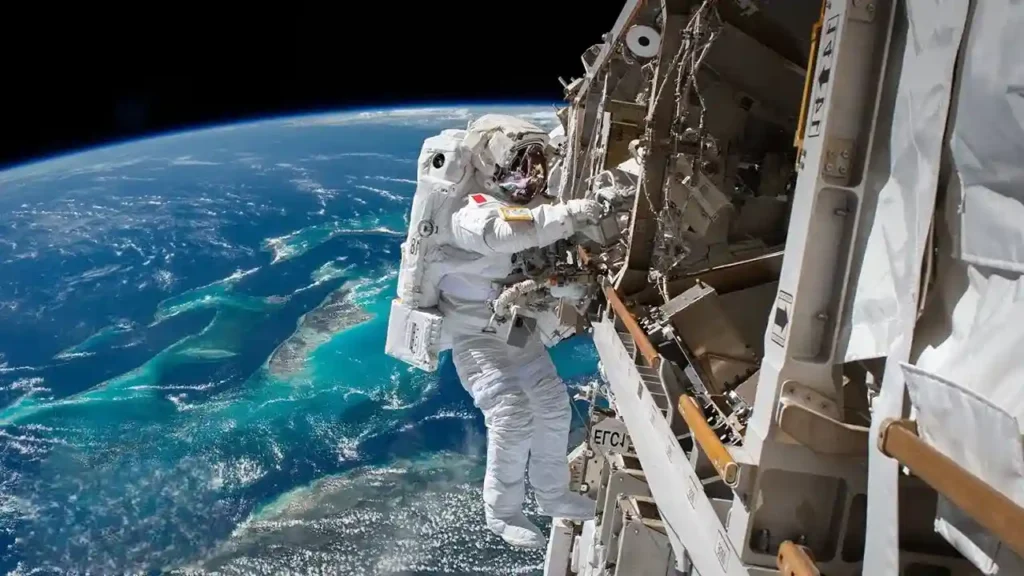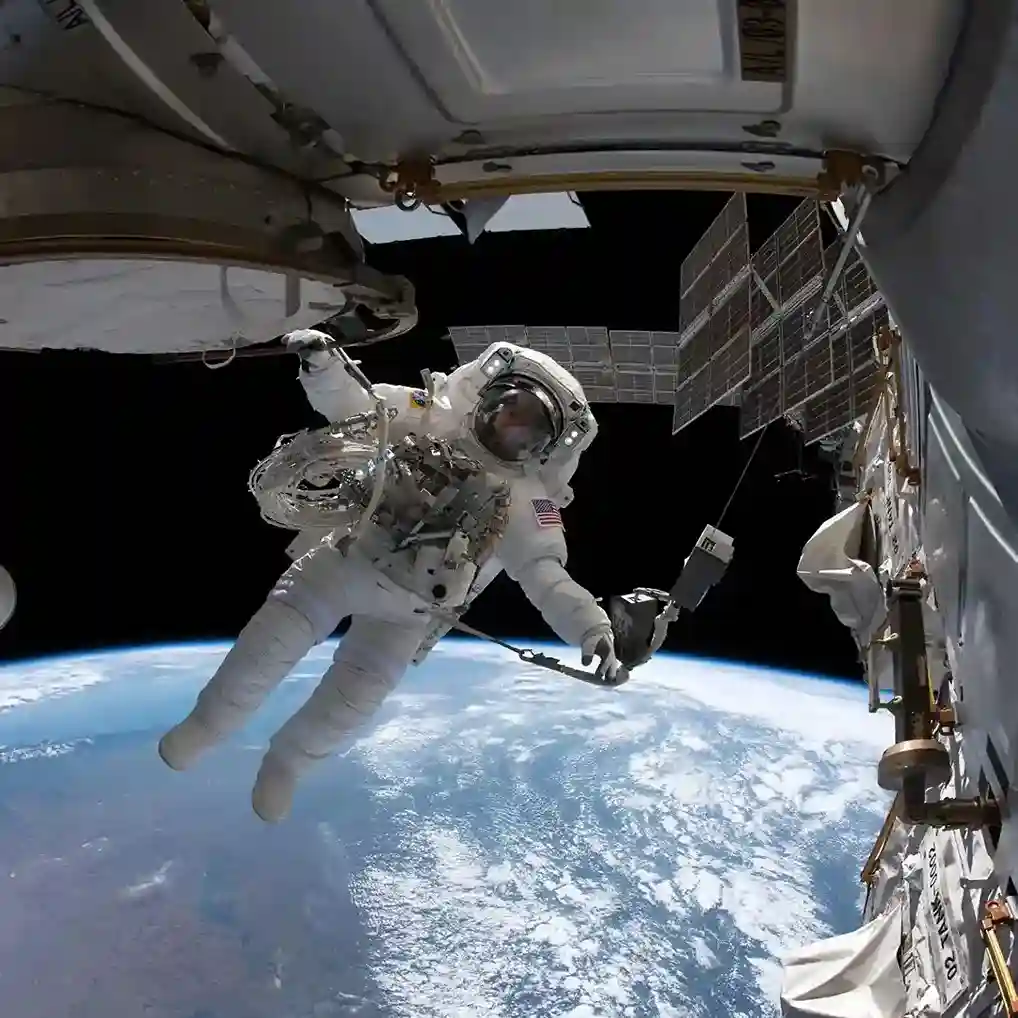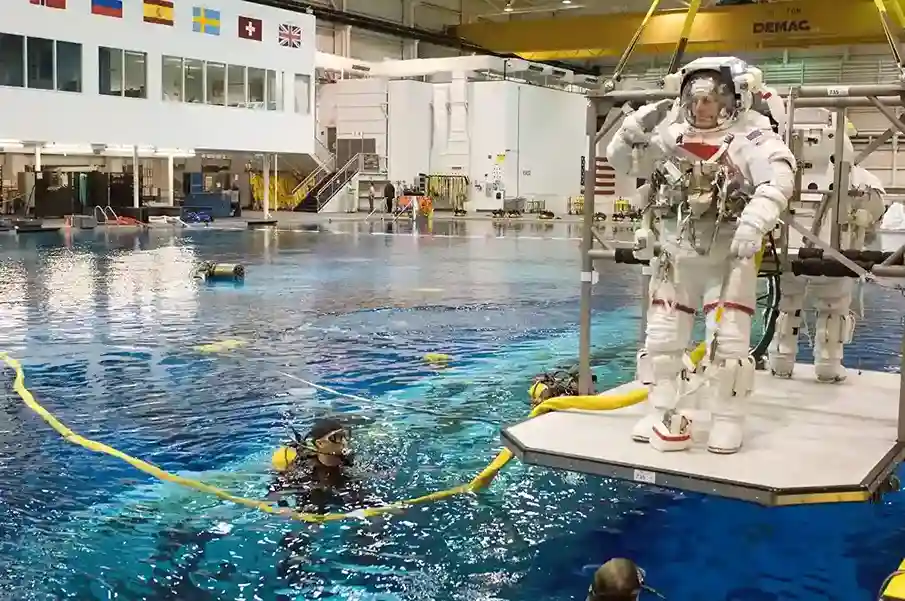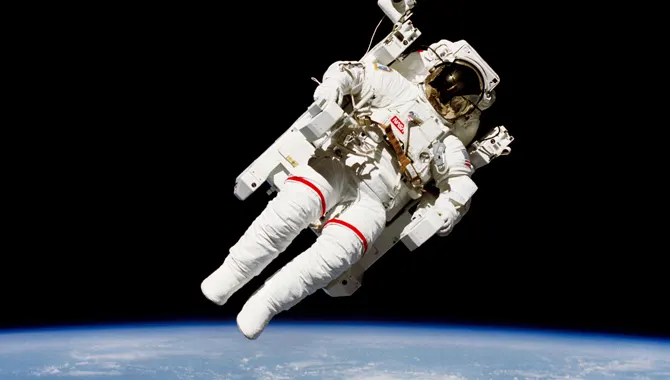Have you ever wondered are spacewalks scary for astronauts? Stepping outside a spacecraft and floating in the vast emptiness of space can be an experience filled with both awe and fear. In this article, we’ll explore whether spacewalks are truly frightening, the risks involved, and what astronauts experience during these extraordinary missions.
Spacewalks play a crucial role in maintaining and upgrading space stations like the International Space Station (ISS) and China’s Tiangong Space Station, where astronauts regularly step into the vacuum of space to conduct repairs, install new equipment, and ensure the stations remain operational for scientific research and exploration.

Table of Contents
What Makes Spacewalks Scary? Risks and Challenges Involved
How scary is a spacewalk can be figured out by the risks and challenges involved in the process. Let us find out.
1. Risk of Radiation:
Astronauts on a spacewalk are exposed to higher levels of space radiation, including cosmic rays and solar particle events, as they lack the protection of Earth’s atmosphere and magnetic field.
This radiation can lead to cellular damage, increased cancer risk, and even acute radiation sickness during intense solar storms. Space agencies mitigate these risks by monitoring solar activity and carefully scheduling spacewalks.
2. Equipment and Suit Malfunctions:
Spacewalks depend on the reliability of spacesuits and equipment. A malfunction in oxygen supply, cooling systems, or suit integrity can quickly become life-threatening.
3. Physical Challenges in Microgravity:
Operating in microgravity is physically demanding. Simple tasks require significant effort, and the lack of gravity makes movements slower and more exhausting.
The bulkiness of the spacesuit further restricts mobility, making precision tasks even more difficult. Astronauts must complete their missions within strict time limits, adding to the physical strain.
4. Extreme Temperatures:
Spacewalks expose astronauts to temperature extremes ranging from -250°F (-157°C) in the shade to 250°F (121°C) in direct sunlight. Managing these conditions requires advanced suit technology, but the extremes can still take a toll on the astronaut’s body and equipment.

5. Mental and Psychological Pressure:
The high-stakes nature of spacewalks creates immense mental pressure. Knowing that even a small mistake could lead to dire consequences can be overwhelming. Astronauts must remain calm and focused despite the constant awareness of potential dangers.
6. Isolation and Disorientation:
The vastness of space can be disorienting. While astronauts are tethered to the spacecraft, the sense of isolation and the possibility of drifting too far can evoke anxiety. Being far from the safety of the spacecraft also heightens feelings of vulnerability.
7. Communication Delays:
Although astronauts maintain communication with mission control, slight delays in real-time responses can complicate problem-solving during emergencies. This adds an extra layer of difficulty to an already challenging task.
8. Decompression Sickness:
Improper pressure adjustments before a spacewalk can result in nitrogen bubbles forming in the bloodstream, leading to decompression sickness, which can be life-threatening if not addressed.
9. Micrometeoroids and Space Debris:
Astronauts face the constant risk of being struck by micrometeoroids or tiny pieces of space debris traveling at extremely high speeds. Even a small particle can puncture the suit or damage critical equipment, creating potentially dangerous situations.
How Astronauts Overcome Fear During Spacewalks
- Rigorous Training: Astronauts spend hundreds of hours in underwater facilities, like NASA’s Neutral Buoyancy Laboratory, to simulate spacewalk conditions. This training helps them become familiar with the tools, techniques, and challenges they might face.
- Team Support: Spacewalks are meticulously planned and executed with the support of mission control teams on Earth. Constant communication and guidance provide astronauts with a safety net, reducing fear.
- Mindset and Focus: Astronauts are trained to stay calm under pressure. Focusing on the task at hand rather than the risks helps them manage fear and anxiety.
- Technological Safety Measures: Modern spacesuits are equipped with multiple safety features, including backup oxygen supplies, tethers, and propulsion systems for emergencies. These measures provide a sense of security.

The Thrill of Spacewalks
Despite the challenges, many astronauts describe spacewalks as life-changing experiences. The opportunity to witness Earth from such a unique vantage point and contribute to scientific advancements is unparalleled. The beauty of space, the silence, and the sense of freedom often leave astronauts in awe.
Conclusion: Are Spacewalks scary?
Are spacewalks scary varies depending on the individual. For astronauts, spacewalks can be both terrifying and awe-inspiring. The risks and challenges are real, but so are the rewards of floating above Earth and contributing to groundbreaking discoveries.
Whether you view spacewalks as intimidating or thrilling, they highlight the bravery and determination of those who push the boundaries of human exploration. Spacewalks are not just tasks—they are extraordinary journeys into the unknown, filled with both fear and wonder.
On December 16, 2024, Cai Xuzhe and Song Lingdong of the Shenzhou 19 mission broke the previous record for the longest spacewalk by spacewalking outside the Tiangong space station for more than nine hours.
